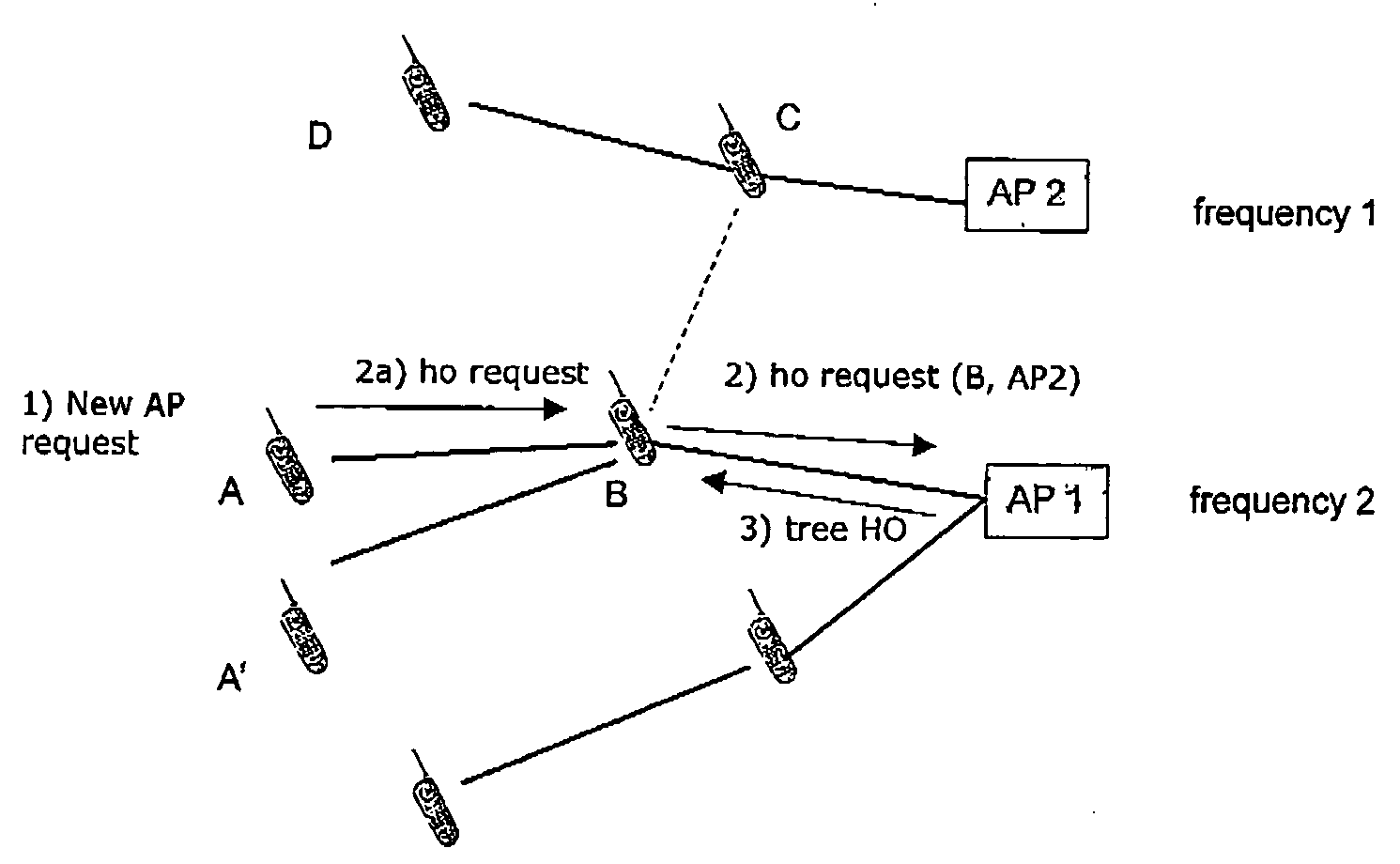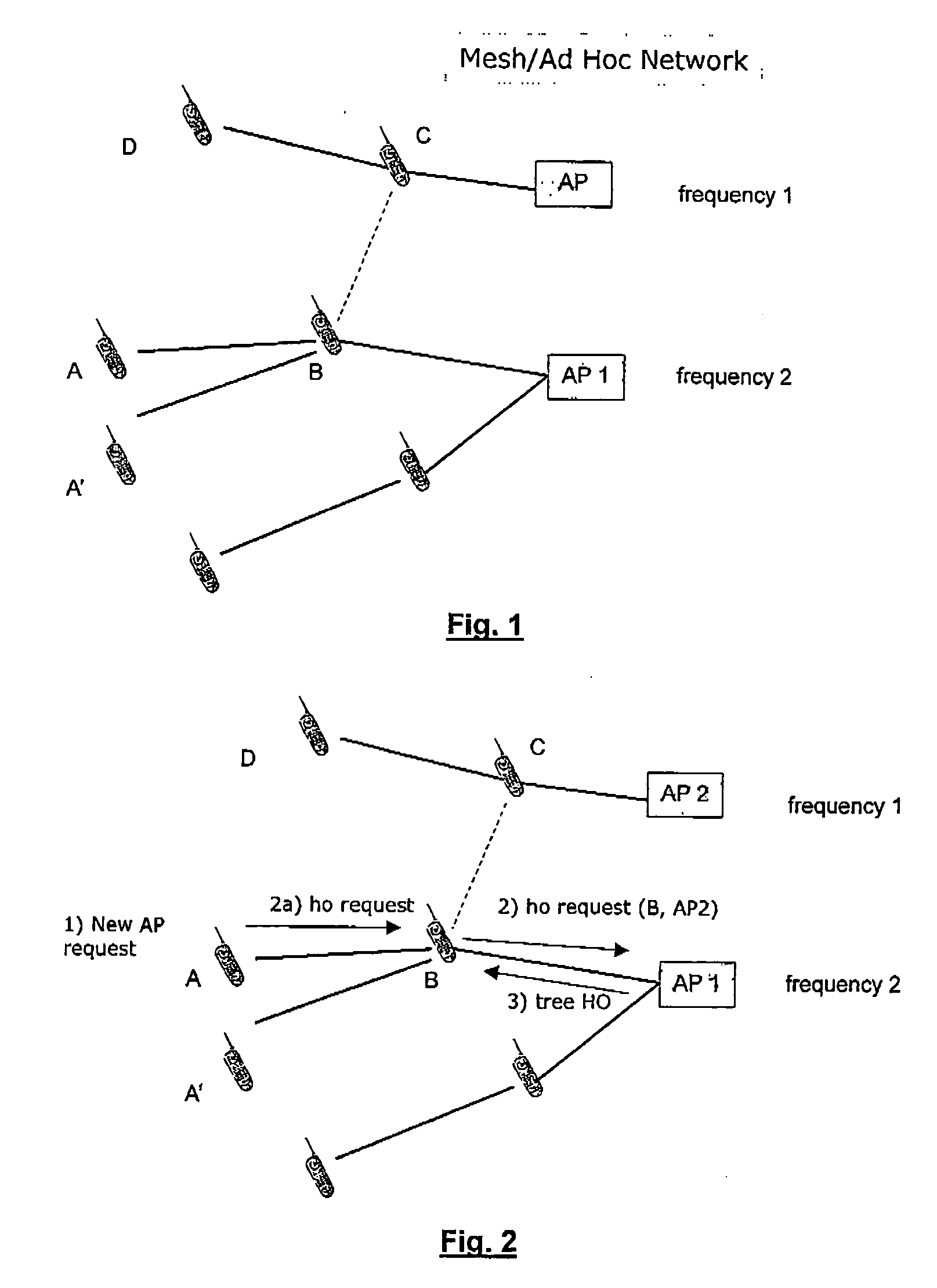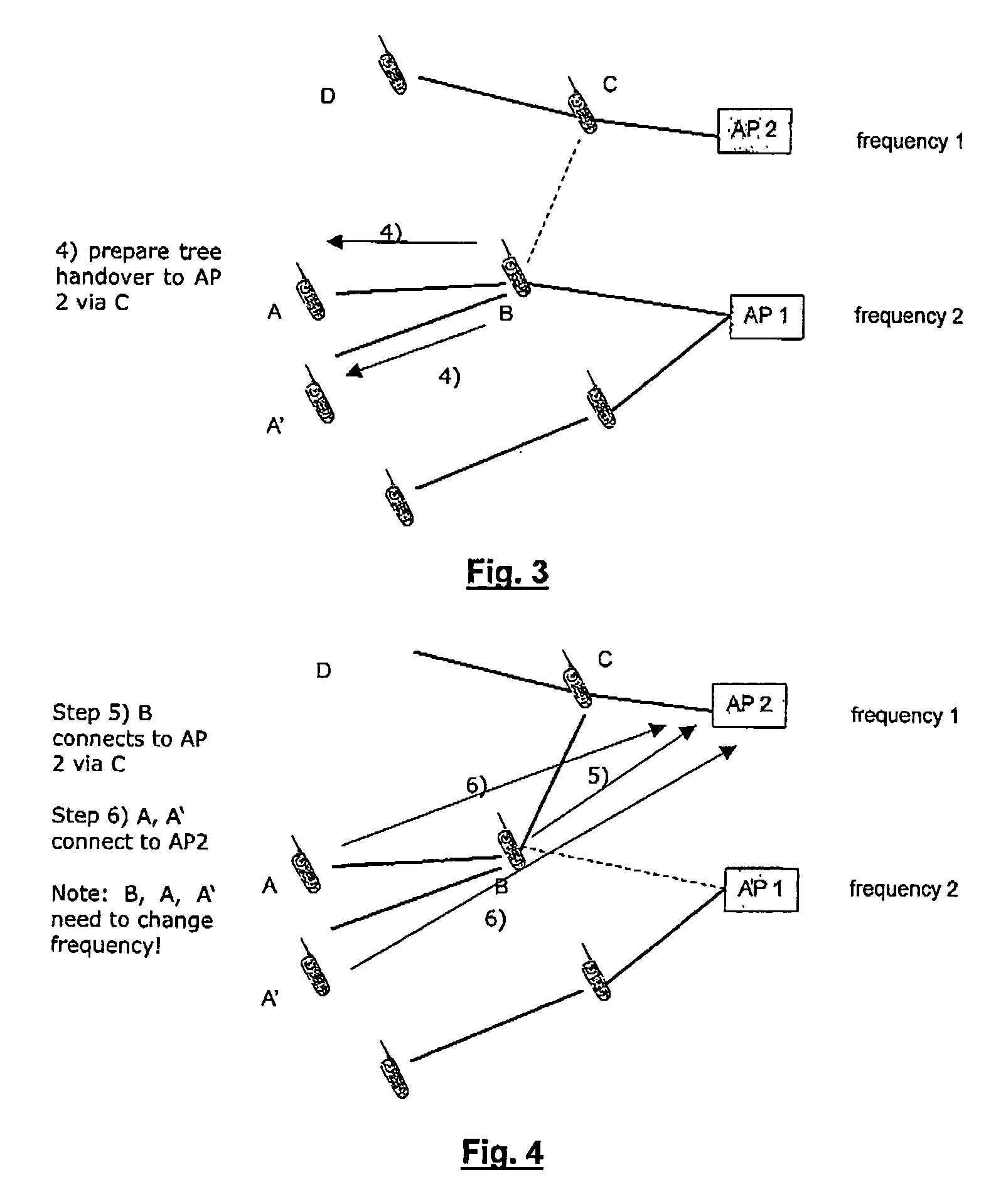Apparatus and method for improved handover in mesh networks
a mesh network and handover technology, applied in electrical equipment, network topologies, wireless commuication services, etc., can solve problems such as service disruption and disconnections, and achieve the effect of avoiding connectivity losses, efficient adapting, and avoiding loss of connectivity
- Summary
- Abstract
- Description
- Claims
- Application Information
AI Technical Summary
Benefits of technology
Problems solved by technology
Method used
Image
Examples
Embodiment Construction
[0041]FIG. 1 illustrates a method for a handover in a mesh network according to a first embodiment of the invention. In this embodiment it is assumed that the two access points AP1 and AP2 operate at different frequencies. In this embodiment it can be beneficial to perform a handover for a tree or a sub-tree in several cases.
[0042] Examples of such cases are [0043] 1. If node B needs to join AP2 with different frequency, A and A′ need to join as well—otherwise they (possibly) cannot connect to any AP. This may e.g. be due to the fact that they are located outside the area covered by AP1 and possibly any other access point as well so that their only possibility not to loose connection is to connect to an access point through node B. This means A and A′ need to change frequency as well. [0044] 2. If A needs to join AP2, e.g. due to other features available at AP2, the node B (and possibly A′) need to join as well. The reason may be the same as in case 1, namely that node A alone may ...
PUM
 Login to View More
Login to View More Abstract
Description
Claims
Application Information
 Login to View More
Login to View More - R&D
- Intellectual Property
- Life Sciences
- Materials
- Tech Scout
- Unparalleled Data Quality
- Higher Quality Content
- 60% Fewer Hallucinations
Browse by: Latest US Patents, China's latest patents, Technical Efficacy Thesaurus, Application Domain, Technology Topic, Popular Technical Reports.
© 2025 PatSnap. All rights reserved.Legal|Privacy policy|Modern Slavery Act Transparency Statement|Sitemap|About US| Contact US: help@patsnap.com



